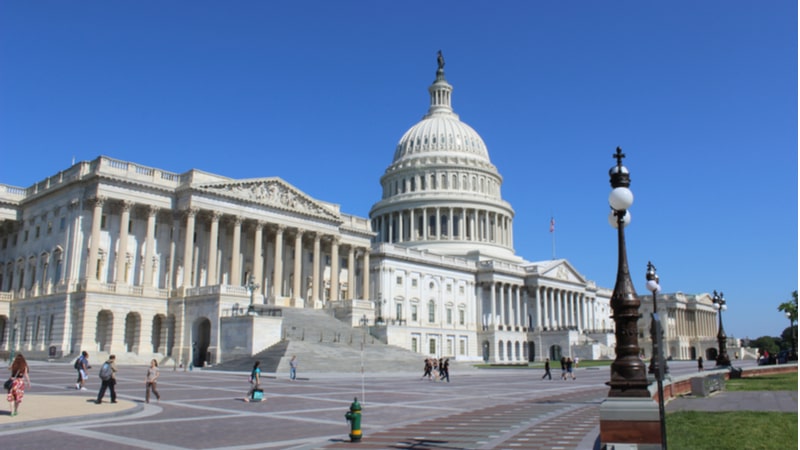
Federal government IT and its ability to deliver vital services to citizens is often said to be one of the few notably bipartisan issues left in Congress, and that sentiment was on clear display as the House Government Operations Subcommittee unveiled its tenth FITARA Scorecard at a public hearing on August 3.
The best way to make sense of the multicolored scorecard – which grades major Federal agency performance across a variety of IT modernization and related policy categories – is to view the FITARA Dashboard, and watch MeriTalk’s FITARA video.
With Federal agency grades on a rising trend, and every agency earning at least a passing overall grade, subcommittee leaders were clearly pleased with their oversight of Federal IT improvement, and interested in hearing how to generate more.
“This achievement is a testament to the hard work of Federal agencies’ Chief Information Officers, and also a testament to this Subcommittee’s steady and bipartisan oversight of FITARA since its enactment in 2014,” said Rep. Gerry Connolly, D-Va., chairman of the subcommittee.
Rep. Jody Hice, R-Ga., ranking member of the subcommittee, called the FITARA scorecard a “bright spot of bipartisan work,” and said it was time to update grading categories. Goals of that effort, he said, should include getting a better handle on how agencies can improve citizen experience, boost Federal IT workforce skills, and “move to an agile and secure cloud computing environment.”
“We need to find ways to get agencies to move the needle on these crucial issues,” he said. “We need to put in place the right kind of incentives to bring about IT modernization at scale … as it relates to the pandemic,” the congressman said, saying that too many Federal agency operations rely on outdated legacy IT systems.
GAO Eyes Data Centers, Savings
Carol Harris, Director of IT Management Issues at the Government Accountability Office appeared as a witness at the hearing and applauded the first-ever FITARA scorecard on which all 24 agencies received overall passing grades. “This is huge,” she said, considering how many agencies got failing grades early on in the scorecard process.
Since FITARA became law, agencies have closed 6,300 data centers and realized more than $20 billion of savings through the “PortfolioStat” process under which agencies are required to review IT investment portfolios to increase efficiency and identify waste and duplication, she said.
On the down side, Harris noted that one-third of Federal agencies still don’t have their CIOs reporting directly to agency secretaries or deputies, and half have not established working capital funds under which IT modernization savings can be captured and reinvested in further modernization.
She said if lagging agencies took both of those steps, the next FITARA scorecard would show 4 overall “A” grades and 15 “B” grades. “Those are achievable by the next scorecard,” she said.
Harris also said she remains “concerned” with Office of Management and Budget (OMB) policy that excludes some small data centers from the Data Center Optimization Initiative (DCOI) that aims to reduce the number of Federal agency data centers in operation, saying that the smaller and often overlooked data centers are potential security risks.
Rep. Connolly said he was going to “insist on a robust definition” of data centers by OMB, and would not agree to “squishiness” in the definition. The subcommittee announced after the hearing that as many as 2,000 Federal data centers are being omitted from OMB’s count.
Looking ahead to a possible change to the FITARA Scorecard that would evaluate agency progress on migration toward the General Services Administration’s (GSA) Enterprise Infrastructure Solutions (EIS) communications services contract, Harris estimated that agencies could have already saved about $330 million by moving to EIS.
Agency CIOs Testify
Clare Martorana, CIO at the Office of Personnel Management, said her agency was “extremely proud” that it raised its overall FITARA grade to a “C+” from a “D+” a year ago, and having done so with the benefit of only one net-new hire, and no additional funding.
Jason Gray, CIO at the Department of Education, told subcommittee members that FITARA was a key enabler of his agency completing a technology refresh last year that helped the agency prepare for quickly moving to 100 percent telework during the coronavirus pandemic.
On the funding front, Gray asked the subcommittee for its assistance in obtaining for the agency authority to set up a working capital fund to capture IT savings and allow for reinvestment in further moderation. He said the agency requested that authority in Fiscal Year 2020 and 2021 budget requests. Rep. Connolly replied, “we certainly will try to work with you on that transfer authority.”
